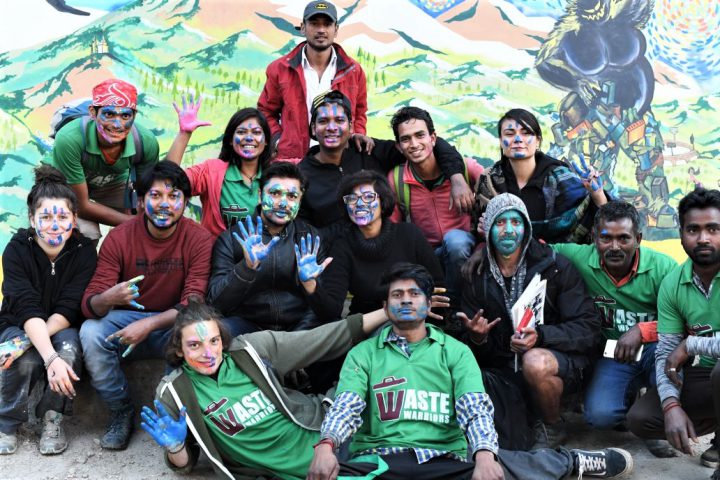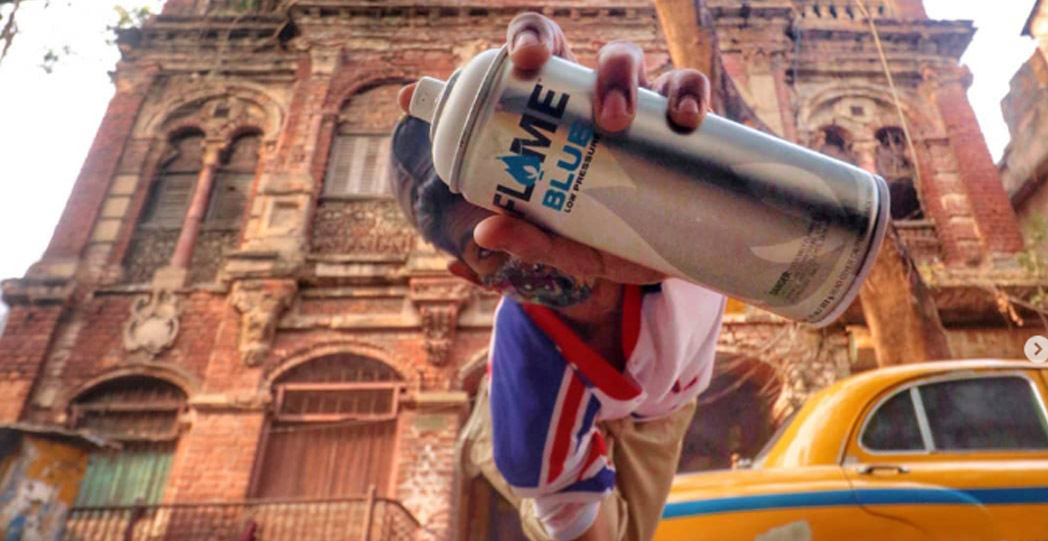
I met Zain Siddiqui for the first time in 2009, in my first week of engineering college in Lonavla. He was my senior, but our common love for football and good music brought us together.
Ever since the inception of Wicked Broz, Zain has been one of the sturdy pillars holding our company in place. In spite of being poles apart as human beings, we somehow compliment each other and give Wicked Broz the balanced care and nurturing that it needs.
Zain is a digital marketing guru and a master community manager. Here’s excerpts of me trying to squeeze out his secrets from him!
1. Can you tell us a bit about your life before Wicked Broz?
I was completing my MBA in marketing from Symbiosis when Wicked Broz happened. But this is not to say that I wasn’t an artist.
I was an artist in the making in my head a long time before that. My hobby of sketching is something that I link directly to my art background before Wicked Broz. I got pretty good at it over the course of my engineering years, thanks to all the lonely hours spent in Lonavla. There were other things too. I used to play football, I would write poetry and prose, I was learning to sing and play music at one point.
Whatever I did, I tried to find a soulful connection to it.
I discovered that I had a gift to turn everything into art as long as I was willing to add creativity and practice to it.

2. What were the main pain points faced by artists in 2014 and what has changed now?
I had no idea about the philosophy of pain points as I see it now. It means you go and talk to your consumer and observe them. In 2014, nothing like that happened. I was out to solve the pain points I had experienced myself in my artist journey. Mainly, the lack of support from parents and peers. Other than that, I also thought of artists not being able to sell their art.
Not much has changed at the core of my philosophy with Wicked Broz in these six years that have passed except for the fact that I’m solving the same pain points for a much larger set of people in whose community I am now part of.
3. What are the different kind of job profiles required in the art and street art industry?
Street art as an industry does not exist and art as an industry is highly unorganized in India at best.
About job profiles – There are agents and then there are artists. This is in a nutshell the core job profile for everyone in the industry. Everyone in between is a motley crew of event managers, client managers and similar roles. These roles have different names in different companies and there is no real standardization.
The artists who don’t sell their own art, produce commissioned art. Some of them often end up choosing careers in the creative space as graphic designers, illustrators, storyboard artists or move out to other creative but more concrete professions like interior design, architecture and advertising.

4. What are the major problems associated with the art industry being an unorganised industry?
The major problem is a cultural problem of the subcontinent in general.
We have lost our respect for the artisans. The ones who still do respect art, rarely have the courage to let their own kids pursue this as a career. That initial push is missing in the homes. That is killing the artists of India.
We have artists walking among us doing common jobs as waiters and bankers, dead inside from the guilt of never having had the courage to do what they wanted.
Many of the few who do make it to the first step are from poorer backgrounds or lack art education and are therefore, not adequately skilled to be able to create and also be able to do the important job of selling their own art.
The few who get past this stage are rare cases and unfortunately, this art elite in India lacks leadership qualities. I don’t see enough of them doing what is needed for the system and giving back.
This leadership vacuum coupled with the initial great wall of fear in the homes I talked about, leaves us with an unorganized industry where people are scammed all the time.
No real regulation from the government adds to the gloomy picture. In this picture, I see us having to take charge and change things.
5. What are the different kinds of clients you meet at Wicked Broz?
Majorly we end up catering to corporates who want office branding or outdoor campaigns, event companies who want venues decorated, restaurants who want to look cool or sometimes government bodies, who approach us mainly with the aim of cleanliness and beautification of the streets.
6. Are things different while working on public sector projects? If yes, how exactly?
Nightmare is the word I would use. I always make a mental note to never work on Public Sector projects until the next one comes along and then you want to do it because come on, it’s the government. You have an opportunity to scale. It comes at a great cost though. You deal with babus who don’t understand nor appreciate good art. They want things their way. They want to work at low rates, they don’t give you an advance and the payments may take you months. As I said, nightmare.

7. Which of your core skills have helped you in this journey at Wicked Broz? Can those same skills be acquired by someone interested to make a career in the art industry?
I would say my core skill is to copy.
Artists have to pick up what they like and be able to replicate its essence. I’m not an artist in what I do at Wicked Broz, but I carry the essence of an artist. And hence, when it comes to making strategic choices or for that matter small things like making designs or doing community building, I’m excellent at copying the right things.
Sometimes, copying also means you have to say no to what you won’t copy and how you will complete the loop in your story yourself. That last mile decision will make you unique.
All artists must be masters at observing and being able to replicate ideas and forms in one way or the other. Copying is the precursor to all creation. Not just artists, but all businessmen must have a similar mindset.
8. What are the top 3 things required to boost the art industry at this point in time?
If you look at the problems I highlighted in the answer I gave previously about problems in the industry, the solution lies in that.
- Make an effort to change the attitude of families and educational institutes towards art. Form a support system for budding artists.
- More art schools and workshops needed to upskill artists in their craft, as well as make them realize the need to be self dependent entrepreneurs unto themselves.
- Artists who have made it big, need to start giving back. They need to be better leaders and come up with effective platforms where they can provide opportunities for others.
Kartikey Sharma’s story in these respects, is inspirational.
9. What kind of revenues can be generated in this industry? For a company/artist/ collective?
Revenue streams are many. Business is just a game for an artist, if he/she truly operates at the level that he/she is meant to. Wicked Broz managed to create a gross revenue of Rs 50 Lac in 2019-2020 financial year alone.
I mean yes, there are certain established streams like selling canvas works in auctions or gallery’s, doing custom commissions, selling through e-commerce platforms or being a social media influencer and then there are innovative ways that you can come up with yourself. Like can you paint used spray cans and sell them in flea markets or in auctions too?
If ever there was a person who could sell anything – it is an artist. He/she just needs to paint it or build a story around it.

10. You started from being an artist collective, and now define Wicked Broz as a graffiti and street art agency. What prompted that change?
Organizations are made of human beings. They evolve.
We started out as an artist collective because we believed in a democracy where artists would be able to be leaders and govern themselves. Four years of trying that with different artists made us realize that it was a futile dream, at least for the time being. Maybe someday later we can transition back to it.
We were always for the artists. Will always be. However, for now, we are an agency. We get work and instead of working with artists, have artists working for us. That is the fundamental difference between the collective we aimed to be and the agency we define ourselves as now.
11. How important is it for artists to know social media marketing in today’s time and age? Does it have a major impact on their revenues?Which is the best platform to promote art?
Social media is an online networking platform to make contacts with other artists and the community you represent. It is a place to brand yourself. An artist who doesn’t use social media in 2020 is in deep shit unless he/she has a very strong offline network. Artists are inherently anti-social and social media offers a great chance for artists to change that public image without actually having to step out out of your home.
Instagram, Pinterest, Tik Tok, YouTube and Facebook are excellent mediums to promote art.

12. If you could do one thing differently in the span of 2014-2019, what would it be?
I hate rhetorical questions. Hehe. The anthropological principle guides me. It is the way it is, because it could not be any other way.
Having said that, if there is one thing I could change that would be maybe the way we worked with our first batch of artists. They wanted to be more center stage to our promotion strategy and maybe we should have given them that. Unfortunately, they did not get on board with the long term vision and we walked our different ways. I wish it wasn’t so.
I am grateful that Zain Siddiqui is on a mission to inject art into everything with us and no one else. His vision and actions are truly a guiding light for us. This interview is so inspiring that I am going to get back to following up with clients and completing all tasks straight away. This man got no chill for a reason. The world is on fire and we are going to save it with buckets full of color.
Follow Zain’s journey as a photographer on his Instagram here www.instagram.com/maqtoub/ and his journey as a digital marketing trainer on his LinkedIn here www.linkedin.com/in/iamzainsiddiqui.


